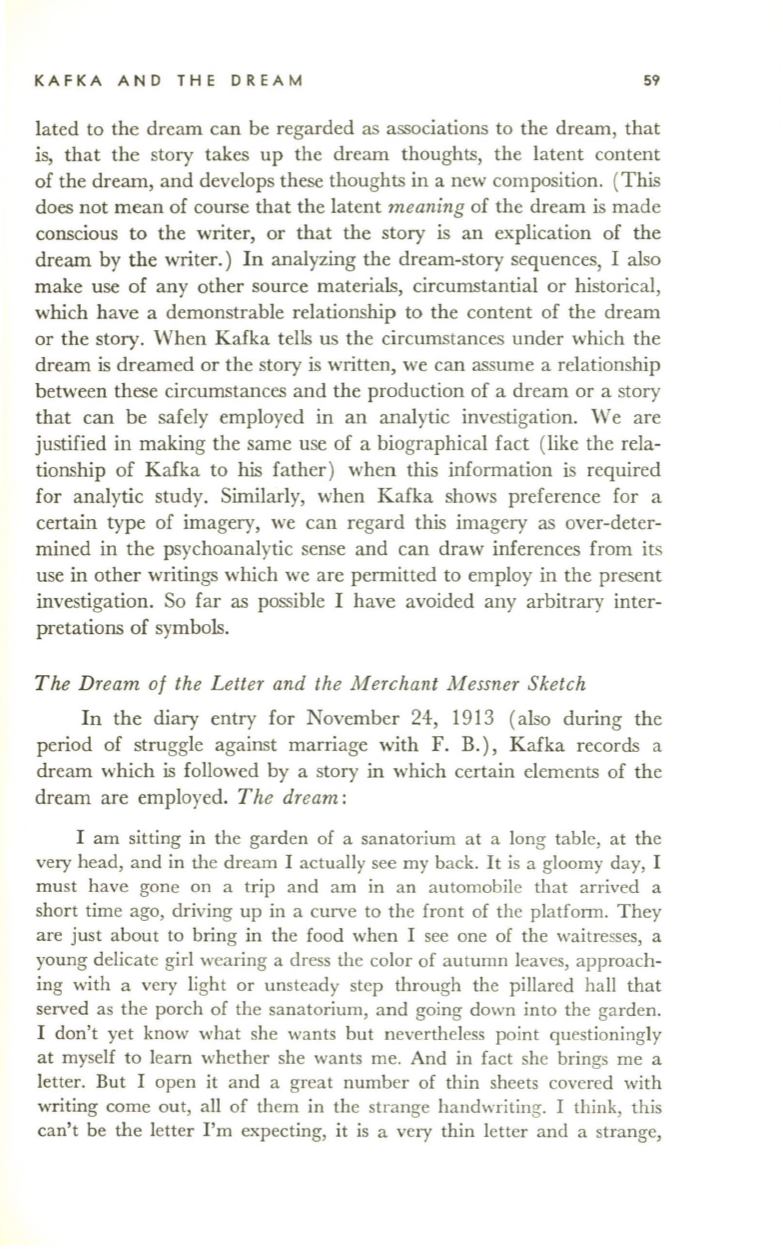
KAFKA AND THE DREAM
59
lated to the dream can be regarded as associations to the dream, that
is, that the story takes up the dream thoughts, the latent content
of the dream, and develops these thoughts in a new composition. (This
does not mean of course that the latent
meaning
of the dream is made
conscious to the writer, or that the story is an explication of the
dream by the writer.) In analyzing the dream-story sequences, I also
make use of any other source materials, circumstantial or historical,
which have a demonstrable relationship to the content of the dream
or the story. When Kafka tells us the circumstances under which the
dream is dreamed or the story is written, we can assume a relationship
between these circumstances and the production of a dream or a story
that can be safely employed in an analytic investigation. Weare
justified in making the same use of a biographical fact (like the rela–
tionship of Kafka to his father) when this information is required
for analytic study. Similarly, when Kafka shows preference for a
certain type of imagery, we can regard this imagery as over-deter–
mined in the psychoanalytic sense and can draw inferences from its
use in other writings which we are permitted to employ in the present
investigation. So far as possible I have avoided any arbitrary inter–
pretations of symbols.
The Dream of the Letter and the Merchant Messner Sketch
In the diary entry for November 24, 1913 (also during the
period of struggle against marriage with F. B.), Kafka records a
dream which is followed by a story in which certain elements of the
dream are employed.
The dream:
I am sitting in the garden of a sanatorium at a long table, at the
very head, and in the dream I actually see my back. It is a gloomy day, I
must have gone on a trip and am in an automobile that arrived a
short time ago, driving up in a curve to the front of the platform. They
are just about to bring in the food when I see one of the waitresses, a
young delicate girl wearing a dress the color of autumn leaves, approach–
ing with a very light or unsteady step through the pillared hall that
served as the porch of the sanatorium, and going down into the garden.
I don't yet know what she wants but nevertheless point questioningly
at myself to learn whether she wants me. And in fact she brings me a
letter. But I open it and a great number of thin sheets covered with
writing come out, all of them in the strange handwriting. I think, this
can't be the letter I'm expecting, it is a very thin letter and a strange,


